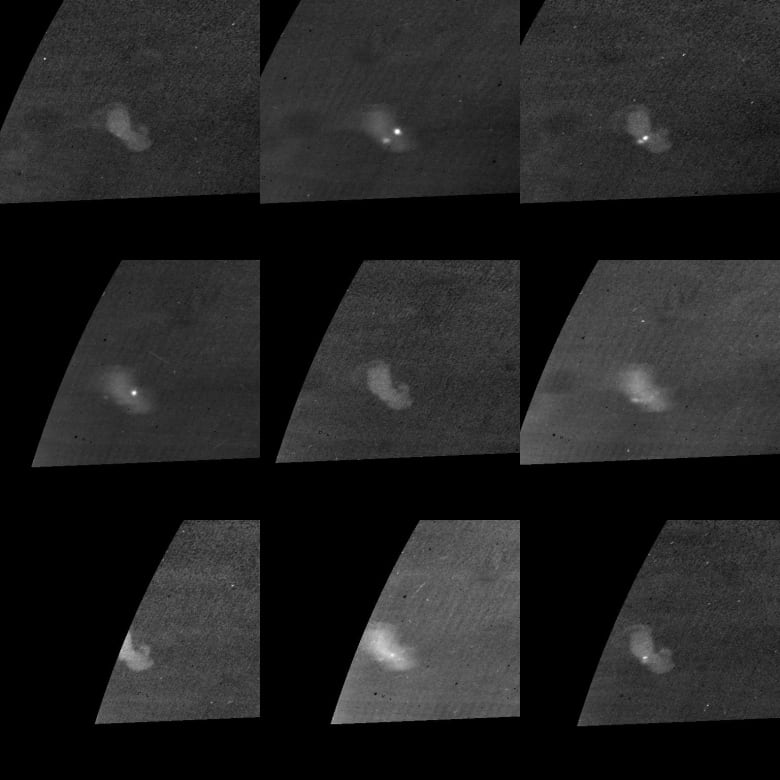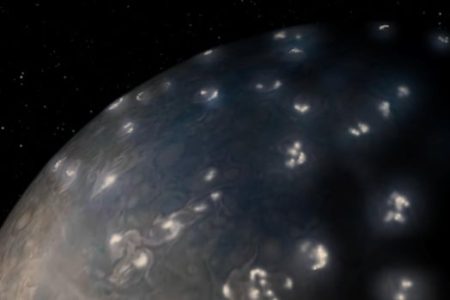Data obtained by NASA’s Juno probe is providing fresh information on how the lightning processes on Jupiter are similar to those on Earth despite the dramatic differences between the two planets, according to scientists.
Hidden below the brownish ammonia clouds blanketing Jupiter are clouds that, like on Earth, are made of water. And like on Earth, lightning often is generated within these clouds — an eerie sight spotted by various spacecraft, including Juno, that have visited our solar system’s largest planet.
Earth is a relatively small rocky world. Jupiter, whose namesake of an ancient Roman god flung lightning bolts, is a gas giant so immense that all the other planets in our solar system could neatly fit inside it — including more than 1,300 Earths.
Tapping into five years of high-resolution data acquired by Juno’s radio receiver as the spacecraft orbits Jupiter, the researchers found that the planet’s lightning initiation processes pulsate with a similar rhythm to that observed inside clouds on our planet. The pulses observed on Jupiter as flashes of lightning were initiated with time separations of about a millisecond, similar to thunderstorms on Earth.
Lightning is the most powerful naturally occurring electrical source on Earth.
“Lightning is an electric discharge, which is initiated inside thunderclouds. The ice and water particles inside the cloud get charged by collisions and form layers of particles with the charge of the same polarity,” said planetary scientist Ivana Kolmasova of the Czech Academy of Sciences’ Institute of Atmospheric Physics in Prague, lead author of the study published this week in the journal Nature Communications.
“By this process, a huge electric field is established and the discharge can be initiated. This explanation is somewhat simplified because scientists are still not completely sure what is exactly happening inside thunderclouds.”
Lightning in the solar system
The existence of lightning on Jupiter was confirmed when telltale radio emissions at audible frequencies were recorded in 1979 by NASA’s Voyager 1 spacecraft as it ventured through the solar system.
The solar system’s other gas planets — Saturn, Uranus and Neptune — also have been shown to have lightning. There is some evidence for lightning in the clouds of the rocky planet Venus, though it is still a matter of debate.

Other studies have detailed other similarities in the lightning processes on Jupiter and Earth. For instance, lightning rates on the two planets are similar, though the distribution of lightning on Jupiter differs from Earth.
“On Earth, the tropical regions are the most active ones. The majority of Jovian lightning occurs in mid-latitudes and also in polar regions. We have nearly no lightning activity close to the poles on the Earth. It means that conditions for the formation of Jovian and terrestrial thunderclouds are probably very different,” Kolmasova said.
“There were some attempts to compare the power of lightning based on optical measurements and it was concluded that lightning on Jupiter might be comparable with the strongest terrestrial lightning.”
Kolmasova noted that more analysis is planned.
Jupiter is composed primarily of hydrogen and helium, with traces of other gases. Stripes and a few storms dominate the colourful appearance of Jupiter, the fifth planet from the sun with a diameter of about 143,000 kilometres.
Juno has been orbiting Jupiter since 2016, obtaining information about its atmosphere, interior structure, internal magnetic field and the region around it created by its internal magnetism.

